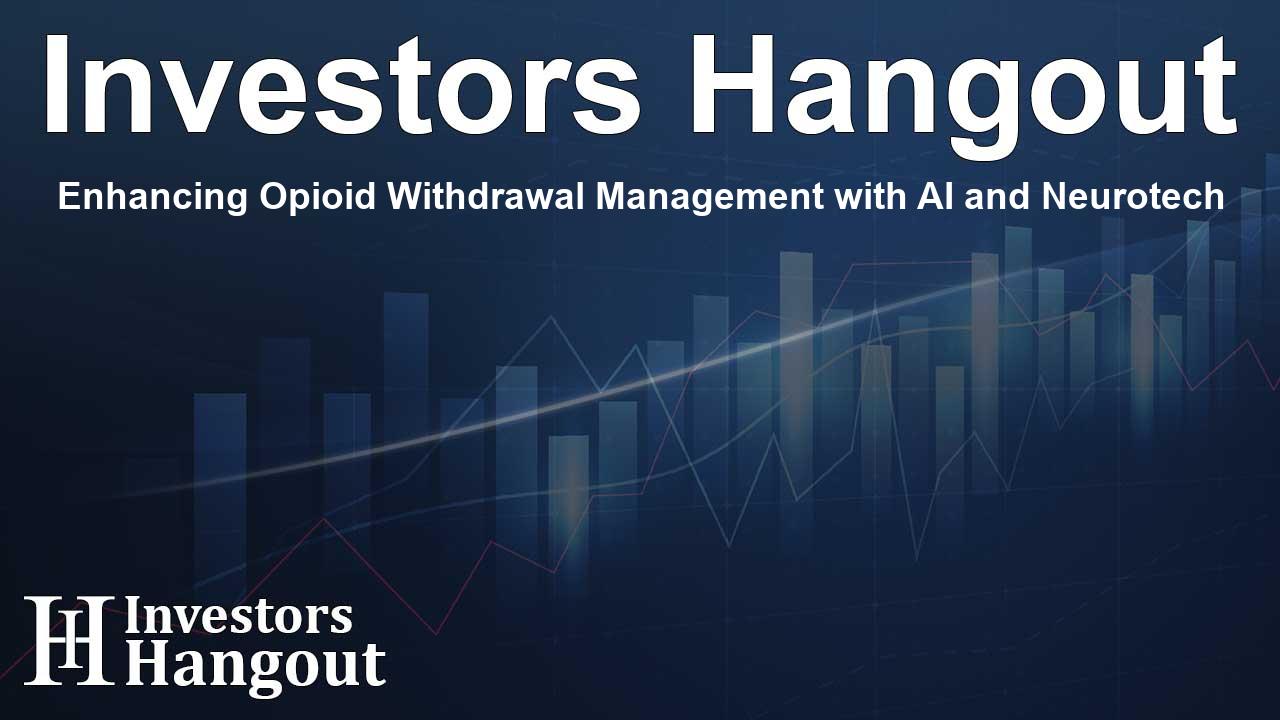Enhancing Opioid Withdrawal Management with AI and Neurotech

Transforming Opioid Use Disorder Recovery Through Innovation
Dallas, TX - Spark Biomedical, a pioneer in wearable neurostimulation technology, is embarking on a groundbreaking initiative aimed at enhancing the treatment of opioid use disorder (OUD). This initiative represents a significant collaboration with highly regarded institutions, Battelle Memorial Institute and Hazelden Betty Ford Foundation, all working together to address the complexities of opioid addiction through advanced technology.
Phase I: Developing an AI-Driven Detection System
The first phase of this ambitious project is supported by a $318,875 Small Business Innovation Research (SBIR) grant from the National Institute on Drug Abuse (NIDA). This funding enables Spark Biomedical to initiate a clinical trial focused on the collection of data and the innovation of an artificial intelligence (AI) algorithm specifically designed to identify opioid withdrawal symptoms and cravings early in the patient experience.
Collecting Critical Data
In this initial phase, participants will wear two advanced devices capable of monitoring vital signals and biomarkers that indicate their physiological state. This includes digital measures such as heart rate and skin temperature, as well as physical biomarkers extracted from sweat, like cortisol and melatonin. Patients will also undergo standardized clinical assessments, ensuring a robust data set that enhances the quality of the AI algorithm development.
Phase II: Implementing Closed-Loop Neurostimulation
After completing the first phase, the next step will apply the freshly developed algorithm in closed-loop neurostimulation using Spark Biomedical’s FDA-cleared Transcutaneous Auricular Neurostimulation (tAN) device, known as Sparrow Ascent. This technology aims to deliver treatment automatically at the moment when withdrawal symptoms or cravings are identified, even before they become evident to the patient. The goal is to improve treatment effectiveness, bolster patient compliance, and decrease the chances of relapse and overdose.
Expert Insights on the Initiative
Dr. Navid Khodaparast, who is the Principal Investigator of the study as well as a co-founder and Chief Science Officer at Spark Biomedical, expresses optimism about the potentials of this collaboration. He states, “We are incredibly well-equipped to tackle the complexities of opioid withdrawal and cravings management through integrating AI and wearable technology. For too long, dependency assessments have relied heavily on subjective measures. By creating an early detection solution combined with neurostimulation, we're set to not only improve patient retention but also outcomes in recovery.”
About Spark Biomedical
Spark Biomedical, Inc. is at the forefront of medical device development in the United States. The company specializes in bioelectric medicine, focusing on delivering innovative wearable neurostimulation solutions that cater to various health sectors, including chronic pain and mental health. Their commitment extends to research partnerships with federal institutions like the NIH and DoD, allowing them to enhance therapeutic options that are both evidence-based and effective.
Collaborations and Future Directions
Through collaborations with respected institutions, Spark Biomedical is dedicated to pushing the boundaries of traditional treatment methods. Their efforts aim not only to improve technology applications in healthcare but also to ensure these innovations lead to practical, real-world solutions for patients grappling with complex health issues.
Conclusion: A Step Towards Combating the Opioid Epidemic
As opioid-related challenges persist, Spark Biomedical is paving the way for innovative solutions that marry technology with compassionate care. With comprehensive research and development, their initiatives hold the potential to significantly alter the landscape of opioid withdrawal management, offering new hope for individuals seeking recovery from addiction.
Frequently Asked Questions
What is Spark Biomedical's main focus?
Spark Biomedical focuses on developing wearable neurostimulation technologies aimed at treating opioid use disorder and enhancing patient outcomes through innovative approaches.
What is the role of AI in this project?
The AI algorithm will help detect and manage opioid withdrawal symptoms and cravings proactively, ensuring timely interventions.
What devices will participants use during the trial?
Participants will wear devices equipped with sensors that measure various digital and biochemical signals associated with withdrawal symptoms.
What does closed-loop neurostimulation mean?
Closed-loop neurostimulation refers to a system where treatment is automatically triggered based on real-time data received from a participant's physiological conditions.
How does this initiative contribute to addressing the opioid epidemic?
This initiative aims to enhance treatment effectiveness, patient compliance, and recovery outcomes, ultimately reducing the risk of relapse and overdose in individuals recovering from opioid addiction.
About Investors Hangout
Investors Hangout is a leading online stock forum for financial discussion and learning, offering a wide range of free tools and resources. It draws in traders of all levels, who exchange market knowledge, investigate trading tactics, and keep an eye on industry developments in real time. Featuring financial articles, stock message boards, quotes, charts, company profiles, and live news updates. Through cooperative learning and a wealth of informational resources, it helps users from novices creating their first portfolios to experts honing their techniques. Join Investors Hangout today: https://investorshangout.com/
Disclaimer: The content of this article is solely for general informational purposes only; it does not represent legal, financial, or investment advice. Investors Hangout does not offer financial advice; the author is not a licensed financial advisor. Consult a qualified advisor before making any financial or investment decisions based on this article. The author's interpretation of publicly available data shapes the opinions presented here; as a result, they should not be taken as advice to purchase, sell, or hold any securities mentioned or any other investments. The author does not guarantee the accuracy, completeness, or timeliness of any material, providing it "as is." Information and market conditions may change; past performance is not indicative of future outcomes. If any of the material offered here is inaccurate, please contact us for corrections.